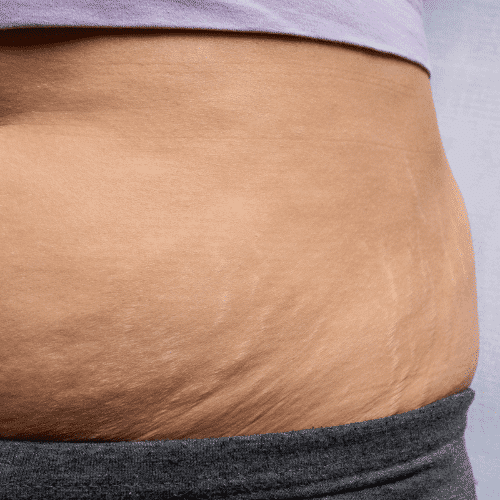C-sections may be a planned procedure for expecting mothers. Still, they can also be an unexpected and daunting last-minute medical emergency their doctor takes based on the birthing circumstances.
When a cesarean is performed, the surgeon will make an incision in the abdomen and a second incision in the uterus to get the baby out.
It is easy to see if your abdomen incision has opened, but for obvious reasons, telling whether or not your internal incision has opened is a little more complicated.
As an Amazon Associate, I earn from qualifying purchases. The links below may be affiliate links. Please read my disclosure policy for more information.
To ease your worries, I will guide you through the warning signs of an internal incision rupture and what to do if you are concerned about it.
How Do Surgeons Close the Internal Incision Wound?
During a cesarean section, your doctor will make a 3–4-inch incision in your uterus – just big enough to get your baby out.
Once the baby is out, they remove the placenta and close the incision using dissolvable stitches.
The entire c-section procedure usually lasts approximately 45 minutes. However, this procedure can be done much quicker in some emergencies.

How Long Does It Take Internal Incisions to Heal?
After your c-section, you will spend 2-3 nights at the hospital, where you will be monitored closely to ensure no initial complications from the procedure, such as internal bleeding.
Once you go home, the healing process truly begins.
After a few days of your operation, the internal stitches used on your uterus will dissolve, making way for the tissue to heal closed.
Most doctors will tell you it takes around six weeks for your uterus incision to heal, as this is when it takes your uterus to contract back to its pre-pregnancy size. However, there have been many recent studies that suggest cesarean healing time is closer to 24 weeks.
Whether your healing takes six weeks, six months, or a year, remember that the timings suggested above are estimates, and everybody is unique, healing on its timeframe.
Don’t judge yourself against other people’s journey, and don’t be disheartened if it takes your body a bit longer to recover. You’re only human, be kind to yourself!
How Do I Know if My Internal Stitches Have Ruptured?
If you have recently had a c-section, you may be worried about your internal stitches rupturing, causing internal bleeding. Here are some key signs to look out for.
Heavy Bleeding
It’s normal to experience some blood loss for a few weeks after you give birth. However, it will lessen as you continue to heal.
However, if the bleeding is heavy, or you see blood clots, this could signify that the internal stitches in your uterus have ruptured and there is internal bleeding.
Severe Abdominal Pain
If you experience intense cramps or sharp pains in your abdomen, particularly around the area of your c-section incision, it could be a sign of internal bleeding.
If you have also have pelvic pain that leaves it difficult to walk or think straight, don’t ignore it.
Dizziness
If you lose a lot of blood through internal bleeding, you may feel dizzy and light-headed.
Although there are many reasons you could be dizzy, if you think it might be something serious, make sure to get it checked out.
Painful Urination
If your internal stitches rupture and you suffer internal bleeding, you may suffer from infections, including a urinary tract infection.
Painful Bowel Movements
Problems during internal healing of your uterus post-cesarean can indicate that the wound has reopened.
In general, painful bowel movements should only last for about a week after birth. After this, it could be a sign that something is not healing correctly.
Low Blood Pressure
Heavy bleeding caused by a rupture in your incision wound can lead to low blood pressure. Low blood pressure can be very dangerous, so make sure you get it checked immediately.
Fever
A common infection symptom, you may have a high fever which could indicate a rupture or infection in your uterus.
Strange Vaginal Discharge or Smell
Infections can cause nasty smells. For example, if your uterine incision ruptures, causing an infection, the vaginal discharge may be smelly and yellow.

What Should I Do if I Suspect My Internal Incision Has Ruptured?
If you suspect your stitches may have ruptured, you must see a doctor right away. A wound that has opened inside can cause infections or hemorrhage.
If unsure whether the incision might have split, you should still seek immediate medical advice – it’s much better to be safe than sorry.
Tips for C-Section Aftercare at Home
Rest
The most important thing you can do to help your uterus incision heal is to rest as much as possible.
This is much easier said than done with a newborn to look after. However, this will be very helpful if you have a partner, parent, or friend who can take on some of your care duties.
Equally, make sure you get as much sleep as you can. Mirror your baby’s sleep pattern to maximize the time you rest.
And don’t worry about trying to keep on top of chores; the most important thing you can do for yourself and your baby is to get a 20-minute nap.
Walking
Good circulation is vital for healing. Movement is a great way to improve circulation. Walking is the perfect way to get yourself moving without overdoing it.
Make sure to go slowly and pace yourself!

How to Avoid Overexertion
Exercise, heavy lifting, and sex are big no-no’s for the first six weeks of recovery while your wounds are healing.
Moving your body too vigorously or stretching too much can aggravate your incisions and, in some cases, may result in your incision opening.
You should not be holding anything heavier than your baby during this time.
However, this still may cause you discomfort, so many experts and fellow mothers recommend if your csection wound hurts when holding your baby and you are breastfeeding, try holding them in the football position. This will alleviate pressure from your recovering abdomen.
Pain Medication
If you are in a lot of pain, your doctor may prescribe you painkillers to help with the pain that many mothers experience postpartum.
If you are breastfeeding, it is better to avoid ibuprofen and opt for paracetamol. Your doctor will be able to give you tailored advice for the best medication for your specific needs.
Make Sure to Keep Your Wound Clean and Dry
By ensuring that your abdominal c-section incision scar stays clean and dry, you can prevent infections that might result in internal complications.
Before you leave the hospital, your healthcare provider will give you detailed instructions on how to best care for your wound.
Abdomen Compression Straps
A few weeks postpartum, some mothers find that using abdominal compression straps helps improve circulation and support recovery.
It also provides support for the abdominal muscles that would have been cut into during the procedure and are also trying to heal, meaning you are less likely to accidentally overstretch and cause a tear in your internal incision scar as it is healing.
Ask for Help!
Motherhood is beautiful and unique, but it can also feel new and scary. After going through something as traumatic for the body as a c-section, now is the time to reach out for help from your circle.
Parents, partners, friends, family… accept all offers of help while you are still healing so you can be back on form quicker and able to enjoy the wonders of motherhood.
Don’t be too proud to accept help; when you’re up at 3 am breastfeeding, you’ll be glad for the friend that came and looked after your child for half an hour so you could get a little sleep!
Can My Internal Incision Rupture in the Future?
In most cases, there is no need to worry about your uterus scar rupturing.
However, if you plan on having another kid, your incision may affect childbirth.
If your doctor used a vertical incision on your uterus, you would need to have another c-section if you get pregnant again.
This is because a vertical incision is too weak to withstand the force created during childbirth, and if vaginal birth were to be attempted, there would be a high risk of it ripping open and internal bleeding.
Your doctor will discuss this with you at your prenatal appointments.

It can be terrifying to undergo such an extensive procedure, which comes with many concerns about your csection recovery.
It is normal to be worried about internal rupturing, especially as you cannot see inside yourself to monitor the progress, unlike the wound on your abdomen.
By reading this post and learning what to look for and how to look after yourself, you have become confident in your recovery. If you are concerned, you must seek medical intervention.
After all, with a beautiful newborn (or newborns) to dote over, you don’t want to spend your time worrying about potential side effects. Enjoy your time with your baby, and make sure you rest up because you deserve it, mama!






